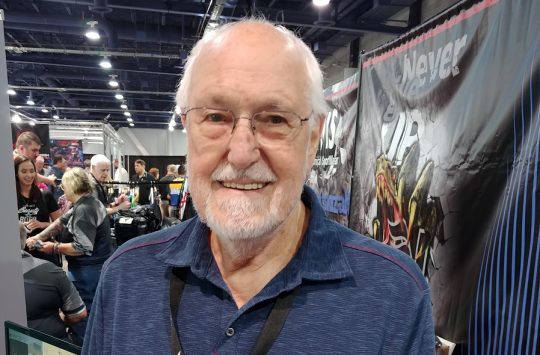Gold Coach Ron Hoppe on Bowling's 'Fit' Crisis, Coaching Two-Handers

For Gold coach Ron Hoppe, an International Bowling Pro Shop and Instructors Association founding member and past President who has worked with such iconic players as Brian Voss, Norm Duke and Mika Koivuniemi, there are two prevailing concerns facing bowling instruction as the calendar turns to 2020.
“I
think too much emphasis is placed on the bowling balls and how to drill them,
but not enough emphasis is placed on the importance of getting a great fit,” Hoppe
explained. “The bowling ball only responds to what a bowler tells it to do, but
you can’t out-bowl a bad fit just like you can’t out-bowl a bad ball reaction. We
need a lot more pro-shop operators to get IBPSIA-certified so we can start
seeing some better fits.
“I
see some horrendous fits,” Hoppe added, “especially among my seniors who come
back to bowling after having been away from it for a long time.”
Hoppe
believes another urgent item to add to the agenda as bowling coaching enters
the 2020s is an established procedure for teaching the two-handed bowling
style.
“We
don’t have anything written and published on coaching two-handers,” he said, “so
I get people coming to me from all over the country because of my work with
Jason for about five years. Parents want to know what to do with
their sons or daughters who are bowling two-handed.
“I
believe it’s the thing of the future and it’s been the best thing that ever
happened to us. I get more and more kids who want to be like Jason Belmonte.”
Hoppe
advised that, “Every bowler is a two-hander to start with; it’s just a matter
of when I let go of the off-hand. So, Jason is a two-handed bowler, but at the
release, he’s one-handed. The difference is he has more control over the angle
of rotation throwing it two-handed than he would with his thumb in the ball
because, with your thumb in it, I have to clear my thumb, and if I’m late, I’m
going to overturn the ball. If I’m early, I’m going to under-turn it, and the
ball will miss the headpin to the right . If I’m late, I’m
going through the face.”
These
are the very factors, Hoppe says, that can make many aspects of coaching
two-handers a little easier than coaching conventional bowlers.
“If
you’re a two-hander, it’s not so severe, and it’s an easier style to teach
because hooking the ball is something you can learn right away. I see coaches
trying to apply what works in coaching thumb-in bowlers to coaching two-handed
bowlers.
“I
give the kids a challenge. I show them Jason bowling, and then I tell them,
‘Now give me your version.’ And then I’ll show them Jason again, and then I
will tell them again, ‘Give me your version.’ And I let them go, and I have all
these cameras so they can watch every single shot.
“They
make their delivery and then they look back immediately to see what happened,
and it almost babysits the kids. Parents come along, they get to watch and so
forth.”
Hoppe
cautions that, “There definitely are things you need to know about two-handed
bowling if your students are going to be good: How to get your elbow slot at
the bottom of the swing, how to coil that whole swing up without forcing
anything, how to do the jump step and land properly with the off-foot.
“I
give them pointers here and there about where in their approach they need to
get better, but mostly I just let them go, and make sure to keep in mind that
these kids are 12 years old and should not be put in a ball heavier than they
can handle just because they can bowl. Their ligaments are still growing. My
main concern as a coach and a pro-shop operator is to prevent injury.
Everything I do fitting-wise is informed by that concern.”





